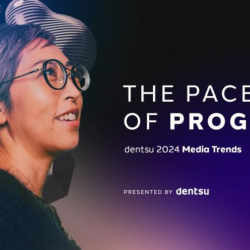In an age where people scroll through content faster than ever, and the number of platforms is multiplying like a pair of rabbits on Valentine’s Day, capturing attention is a challenge that is becoming ever more challenging.
The interesting thing is that advertisers seem to be dealing with that situation in wildly different ways. On one hand, average TV advertising time lengths have been shrinking, while many big brands, such as Ford, Pampers and Domino’s, have made use of YouTube’s six-second bumper format. Over on Snapchat, however, they’re in even more of a hurry, with a recommended time length of just 3-5 seconds. That said, nothing has managed to surpass Miller’s one-second Superbowl spot featuring nothing more than an actor shouting ‘High Life!’
On the face of it, these ever-shrinking formats are the perfect solution to today’s fragmented media environment. They fit perfectly into the fleeting moments of attention we give to social feeds or skippable YouTube ads. In their brevity, they demonstrate how a sharp creative idea can pierce the endless noise, even if it only has a few seconds to do so. On the other hand there are quite a few advertising campaigns that are attempting the opposite, offering us work that requires more and more minutes of our valuable time. Waitrose’s current two-part whodunnit commercial invites audiences to spend 150 seconds engaging with their attempt to sell plum pudding, but that’s nothing compared to the 2-hour ‘Barbie Movie’, or indeed the permanent fixture of the Fearless Girl statue.
These contrasting approaches beg the question: are we truly incapable of paying attention anymore, or are we surprisingly willing to immerse ourselves in hours of corporate messaging? The answer, of course, is both.
Attention spans haven’t necessarily diminished; they’ve just become more selective. The issue isn’t how long an ad is but how compelling it can be, and ‘compelling’ is about as subjective an adjective as you can get.
There’s a huge audience that is not interested in either a very long TV commercial that runs during the latest episode of Bake Off, or a 2-second blipvert. That’s why other brands have attempted to compel the attention of entirely different communities in entirely different ways. Nikeland, Gucci Town and Vans World have all served their potential customers a deeper, more interactive experience in the Roblox platform.
Similarly, Ralph Lauren partnered with Snapchat to create a Bitmoji fashion collection, allowing users to dress their avatars in digital replicas of real-life Ralph Lauren apparel. And Hellmann’s created an island in the Animal Crossing game, where players could donate their spoiled turnips to be converted into real-world food donations for charity.

So far, so compelling. But that word has ever-changing definitions, and advertising must always keep on its toes to ensure that as many eyeballs as possible stay on its messages. Without attention, an ad is like the proverbial tree falling in the woods — so this drive to be noticed has always been an intrinsic and fundamental part of everything the industry has ever produced.
As an example, much older readers might recall the Gold Blend Couple from the 1980s. That was a series of twelve ads that ran over six years, tracing the relationship of a pair of neighbours who seemed strangely driven to flirt over their mutual love of instant coffee. To 2024 ears that must sound ridiculously quaint, but it commanded national discussion and front-page newspaper headlines. In those days it was the very definition of compelling. But that’s because there were only four TV channels and no internet. We were bored and desperate for entertainment.
The change that happened in a few decades has been so colossal that it’s hard to imagine what will come next. Will we look back at the Roblox tie-ins, branded movies and defiant statues and consider them to be a sadly outdated relic of a bygone era?
Who knows? But one thing’s for sure: advertising’s need to provide compelling content for jaded eyes and tired ears will remain, no matter what the medium, time length, budget or era.
Featured image: Sweet Suspicion: A Waitrose Mystery / YouTube
































